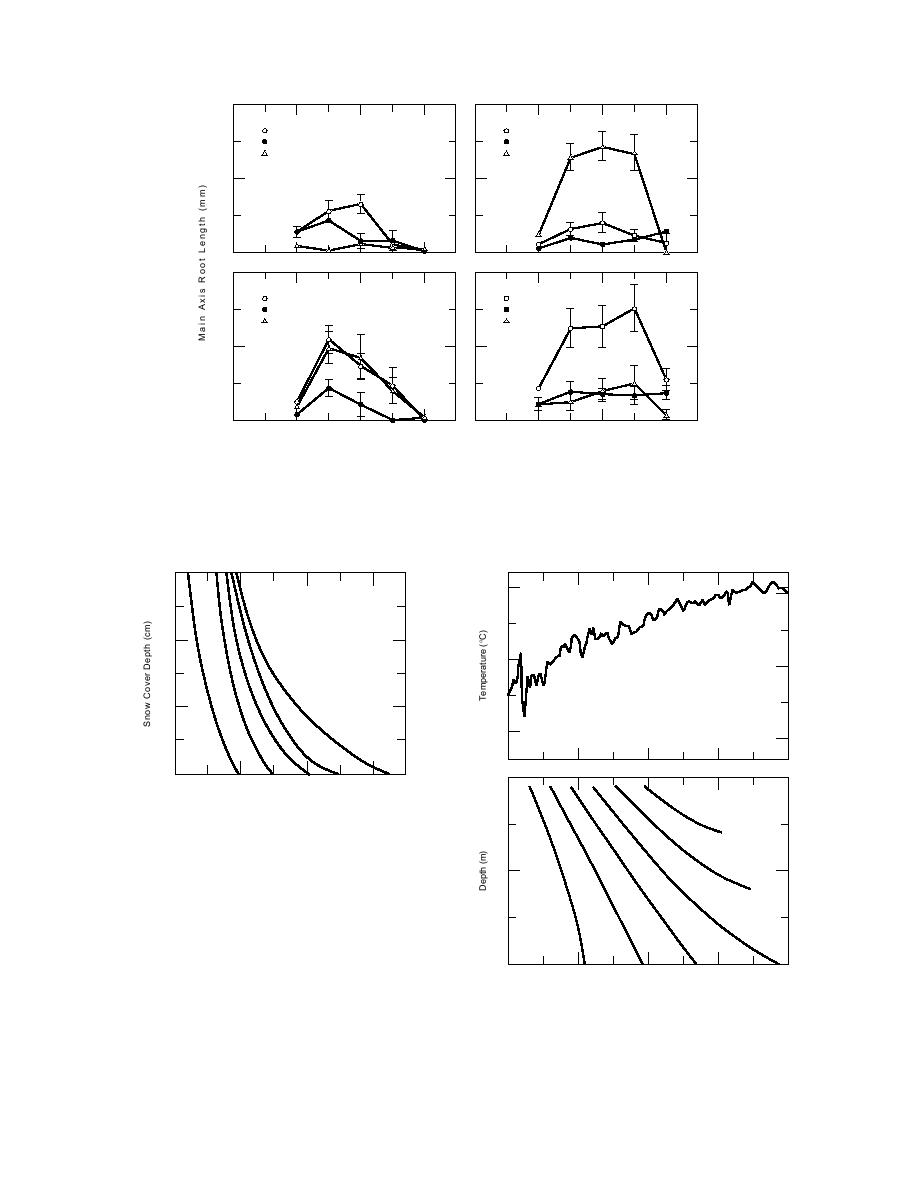
200
A
D
B
E
C
F
100
0
200
G
J
H
K
I
L
100
0
10
20
30
0
10
20
30
T e m p e r a t u r e ( C )
I) Amclo arrowleaf clover
A) Paraponto gama medic
E) Vanguard vetch
J) Cahaba white vetch
F) Woodford vetch
B) Mt. Baker subterranean clover
K) Hairy vetch
G) Austrian winter pea
C) Chief crimson clover
L) Eski sainfoin
H) Maxidor alfalfa
D) Kenstar red clover
Figure 8. Main axis root length at ten days after planting as a function of tempera-
ture (after Brar et al. 1990a).
60
30
40
20
Minimum Air
Temperature (C)
20
50
10
Temple, Texas
40
10
20 30
0
0
10
20
30
Minimum Soil Temperature at 3cm Depth (C)
Soil Temperature
Isotherms (C)
Figure 9. Minimum soil temperature at 3-cm
28
depth as affected by minimum air tempera-
26
ture and depth of snow cover (after Shul'gin
24
1
1967).
22
20
18
soil temperature regimes and root temperature
response (Kaspar and Bland 1992).
Soil temperature usually limits root system ex-
2
pansion and proliferation. Root expansion is a
80
120
160
200
240
function of temperature-dependent processes
Day of Year
such as growth and development. Growth pro-
Figure 10. Seasonal warming of air temperatures (5-
cesses include cell elongation, root length in-
year average of daily means) determines when temper-
crease, and root diameter. Developmental pro-
atures are favorable for plant growth. Soil temperatures
cesses generally control growth duration of cells
favorable for root growth vary with time and depth (mod-
(Burstrom 1956, Beauchamp and Lathwell 1966),
eled thermal regime) (after Kasper and Bland 1992).
13



 Previous Page
Previous Page
